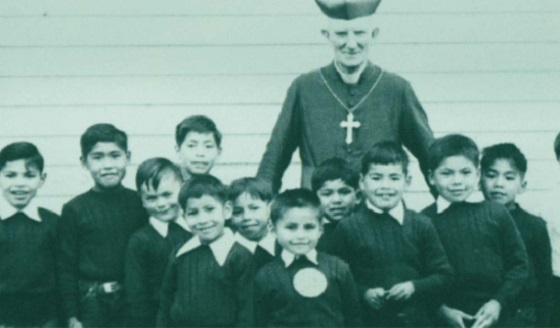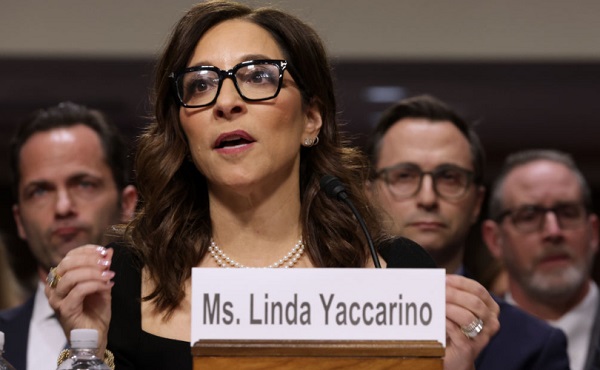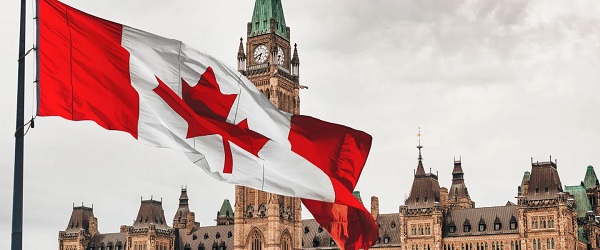Education
New Report Offers a Nuanced Perspective on Canada’s Indian Residential Schools

From the Frontier Centre for Public Policy
Positive stories about Indian Residential Schools must also be heard
The Frontier Centre for Public Policy is pleased to announce the release of a thought-provoking new report titled Positive Stories of Indian Residential Schools Must Also be Heard by Hymie Rubenstein and James C. McCrae. This report challenges the dominant narrative surrounding Canada’s Indian Residential Schools, advocating for a more balanced and comprehensive understanding of their historical legacy.
In Positive Stories of Indian Residential Schools Must Also be Heard, Rubenstein and McCrae critically examine the current portrayal of the residential school system, which is often overwhelmingly negative. The authors argue that this narrative fails to acknowledge the positive experiences of many former students and the genuine intentions of those who worked within the system. While not dismissing the testimonies of abuse, the report emphasizes that these accounts do not represent the full spectrum of experiences at the schools.
The report highlights several stories of individuals who credit their time in residential schools with shaping their successful futures. For instance, Len Marchand, Canada’s first status Indian member of parliament and a federal cabinet minister, attended the Kamloops (BC) Indian Residential School and spoke highly of the education he received there. In his memoir, Breaking Trail, he noted that his time at the school inspired his desire to help his people through education.
Similarly, Tomson Highway, a celebrated Canadian playwright and composer, described his years at Guy Hill Indian Residential School in Manitoba as “nine of the best years of my life.” His parents chose to send him to the school, believing it would provide better opportunities for their children. The skills Highway acquired, including classical piano, were instrumental in his later achievements.
Reverend Canon Stan Cuthand, an Indigenous Anglican priest who served as a chaplain at several residential schools, also offers a positive perspective. He recalled that the schools were not “terrible places” and praised the efforts of staff who worked to protect and nurture the children, even integrating Indigenous culture into the curriculum.
As students return to classrooms this fall, the topic of residential schools has taken a central role in many curricula across the country. However, there is concern that some teachers focus solely on the “horrors” of these institutions or even frame Canada as a genocidal state, leaving little room for a balanced discussion. This report urges educators to offer a more nuanced view that includes both the positive and negative aspects of the residential school system. Stories like those of Tomson Highway and Len Marchand demonstrate that not every experience was one of trauma, and some students went on to achieve remarkable success as a result of their education.
The report also touches on the experiences of Lea Meadows, whose mother, Elsie McLaren Meadows, had a positive experience at the Brandon (Manitoba) Indian Residential School. Inspired by her time there, Elsie became a teacher and later worked in similar schools. Meadows argues that it is unjust to label all who worked at these schools as abusers, recognizing that many were dedicated to the well-being and education of the children.
Moreover, the report cites instances where Indigenous communities themselves supported the continuation of residential schools. For example, in 1970, Alberta’s Saddle Lake First Nation residents successfully protested the closure of Blue Quills School, taking control of the institution themselves. Similarly, in 1971, eight Saskatchewan bands advocated for the Marieval Indian Residential School to remain open, emphasizing its importance for children from challenging home environments.
Positive Stories of Indian Residential Schools Must Also be Heard is a timely and significant contribution to the ongoing debate about the legacy of the residential school system. It encourages Canadians to consider all perspectives in the pursuit of truth and reconciliation, acknowledging both the positive and negative aspects of this complex history.
Download the backgrounder here. (10 pages)
About the Authors:
- Hymie Rubenstein is the editor of REAL Indigenous Report. A retired professor of anthropology, he served as a board member and taught for many years at St. Paul’s College, University of Manitoba, the only Roman Catholic higher education institution in Manitoba.
- James C. McCrae is a former attorney general of Manitoba and Canadian citizenship judge.
Alberta
Alberta poll shows strong resistance to pornographic material in school libraries

From LifeSiteNews
A government survey revealed strong public support, particularly among parents, for restricting or banning sexually explicit books.
Albertans are largely opposed to their children viewing pornography in school libraries, according to government polling.
In a June 20 press release, the Government of Alberta announced that their public engagement survey, launched after the discovery of sexually explicit books in school libraries, found that Albertans strongly support removing or limiting such content.
“Parents, educators and Albertans in general want action to ensure children don’t have access to age-inappropriate materials in school libraries,” Demetrios Nicolaides, Minister of Education and Childcare, said.
“We will use this valuable input to guide the creation of a province-wide standard to ensure the policy reflects the priorities and values of Albertans,” he continued.
READ: Support for traditional family values surges in Alberta
The survey, conducted between May 28 to June 6, received nearly 80,000 responses, revealing a widespread interest in the issue.
While 61 percent of respondents said that they had never previously been concerned about children viewing sexually explicit content in libraries, most were opposed to young children viewing it. 34 percent said children should never be able to access sexually explicit content in school libraries, while 23 percent believed it should be restricted to those aged 15 and up.
Similarly, 44 percent of parents of school-aged children were supportive of government regulations to control content in school libraries. Additionally, 62 percent of respondents either agreed or strongly agreed that “parents and guardians should play a role in reporting or challenging the availability of materials with sexually explicit content in school libraries.”
READ: Alberta Conservatives seeking to ban sexually graphic books from school libraries
The polling results come after the Conservative Alberta government under Premier Danielle Smith announced that they are going ahead with plans to eventually ban books with sexually explicit as well as pornographic material, many of which contain LGBT and even pedophilic content, from all school libraries, on May 27.
At the time, Nicolaides revealed that it was “extremely concerning” to discover that sexually explicit books were available in school libraries.
The books in question, found at multiple school locations, are Gender Queer, a graphic novel by Maia Kobabe; Flamer, a graphic novel by Mike Curato; Blankets, a graphic novel by Craig Thompson; and Fun Home, a graphic novel by Alison Bechdel.
David Clinton
Why Are Ontario’s Public Schools So Violent?


 David Clinton
David Clinton
Ontario’s Auditor General just released a performance audit on the Toronto District School Board. I’m sure it’ll surprise exactly no one that “financial and capital resources are not consistently allocated in the most cost-effective or efficient way” or that “The effective management of operations was not always being measured and assessed for internal decision-making”.
And there was plenty of institutional chaos:
“Between 2017/18 and 2022/23…about 38% of TDSB schools did not report conducting the minimum number of fire drills required by the Ontario Fire Code annually, and about 31% of TDSB schools did not report conducting the minimum number of lockdown drills required by TDSB policy annually. The TDSB does not have an effective process to ensure the required number of drills are performed by each school, each year, or that they are performed in accordance with TDSB policy when performed.”
What else would you expect from a massive government bureaucracy that employs 40,000 people, spends $3.6 billion annually and – based on many of the highlighted items on their website – is laser-focused on pretty much anything besides education?
What you might not have seen coming was that around half of the report centered on in-school violence. To be sure, we’re told that there were only 407 violent events reported to the board during the 2022/2023 school year – which is a rate of around 17 events for every 10,000 students. 17:10,000 doesn’t exactly sound like an environment that’s spiraling out of control.
There was a caveat:
“Due to input errors by principals, the TDSB underreported the number of violent incidents that occurred between 2017/18 to 2021/22 to the Ministry by about 9%.”
Ok. But we’re still nowhere near Mad Max levels of violence. So what’s attracting so much of the auditor’s attention? Perhaps it’s got something to do with a couple of recent surveys whose results don’t quite match the board’s own records. Here’s how the audit describes the first of those:
“The 2022/23 TDSB Student and Parent Census was responded to by over 138,000 students, parents, guardians and caregivers. It showed that 23% of students in Grades 4 to 12 that responded to the survey said they were physically bullied (e.g., grabbed, shoved, punched, kicked, tripped, spat at), and about 71% stated they were verbally bullied (e.g., sworn at, threatened, insulted, teased, put down, called names, made fun of). Further, about 14% of student respondents indicated they had been cyberbullied. TDSB’s central tracking of all bullying incidents is much lower than this, suggesting that they are not centrally capturing a large number of bullying incidents that are occurring.”
“23% of students in Grades 4 to 12 that responded to the survey said they were physically bullied”. That’s not a great fit with that 17:10,000 ratio, even if you add the 9 percent of underreported incidents. And bear in mind that these students and their families were willing to discuss their experiences in a survey run by the school board itself, so it’s not like they’re hard to find.
But that’s not the worst of it. The Elementary Teachers’ Federation of Ontario (ETFO) ran their own survey in 2023. They wanted to hear about their members’ experiences with workplace violence. Here, quoting from the audit report, is what TDSB respondents told them:
- 42% had experienced physical force against themselves in 2022/23;
- 18% had experienced more than 10 of these physical force incidents in 2022/23;
- 81% indicated the number of violent incidents increased since they started working;
- about 77% responded that violence was a growing problem at their school;
- about 29% indicated they had suffered a physical injury;
- 57% had suffered a psychological injury/illness (such as mental stress, psychological or emotional harm) as a result of workplace violence against them; and
- about 85% indicated that violence at their school made teaching and working with students more difficult.
29 percent of teachers suffered a physical injury due to workplace violence. That’s elementary school teachers we’re talking about.
For perspective, even accounting for the 9 percent underreporting, the TDSB was aware of events impacting less than a quarter of a percentage point of their students (and apparently didn’t report any violence against teachers). But by their own accounts, 23 percent of all students and 42 percent of elementary teachers have suffered attacks. Are board officials willfully ignoring this stuff?
And if only there was some way to address violence and other criminal activities on school property. Perhaps – and I’m just spitballing here – there could even be people working in schools whose job it would be to (what’s the word I’m looking for?) police crime.
On a completely unrelated note, back in November, 2017, the Toronto District School Board voted 18-3 to permanently end their School Resource Officer (SRO) program. Since then, police officers have been unwelcome on board property.
To be sure, the TDSB has “accepted” all 18 of the report’s recommendations. But talk is cheap. Who’s to say that commitment won’t play out the same way we’ve seen with their fire drill compliance.
Can you spell “class action lawsuit”?
-

 Also Interesting1 day ago
Also Interesting1 day ago9 Things You Should Know About PK/PD in Drug Research
-

 Business2 days ago
Business2 days ago‘Experts’ Warned Free Markets Would Ruin Argentina — Looks Like They Were Dead Wrong
-

 Business2 days ago
Business2 days agoWEF-linked Linda Yaccarino to step down as CEO of X
-

 Business1 day ago
Business1 day agoCannabis Legalization Is Starting to Look Like a Really Dumb Idea
-

 Business1 day ago
Business1 day agoCarney government should recognize that private sector drives Canada’s economy
-

 Bruce Dowbiggin1 day ago
Bruce Dowbiggin1 day agoThe Covid 19 Disaster: When Do We Get The Apologies?
-

 Media1 day ago
Media1 day agoCBC journalist quits, accuses outlet of anti-Conservative bias and censorship
-

 Automotive2 days ago
Automotive2 days agoAmerica’s EV Industry Must Now Compete On A Level Playing Field




